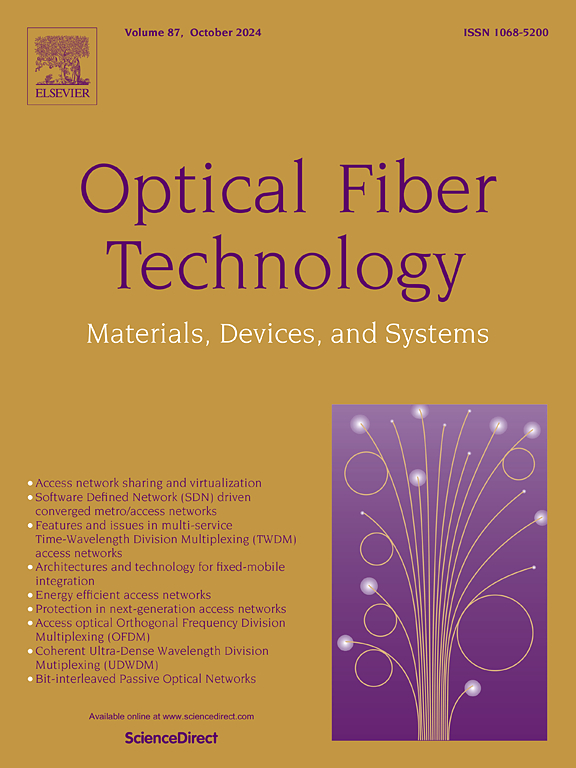Impact of bending angle on antiresonant fibers with optimized symmetric geometries
IF 2.6
3区 计算机科学
Q2 ENGINEERING, ELECTRICAL & ELECTRONIC
引用次数: 0
Abstract
Hollow core fibers are unique in reducing signal latency, as well as providing low dispersion and low nonlinearity. Their adoption is hindered by cost, particularly for complex structures that provide the lowest loss. Designs of antiresonant nodeless fiber (ANF) with uniformly sized capillaries, symmetric structures, and without nesting have simple structures that could more readily achieve commercial exploitation. We investigate simple ANF structures for short-reach applications where reduced latency is critical and transmission lengths are short enough to allow a trade-off on loss.
A common design rule in ANF targets a ratio of 0.68 for capillary diameter to core diameter. We find that when such a design is combined with a large core diameter, the fiber is highly sensitive to bending orientation. We identify ANF designs that offer single-mode operation with acceptable loss, as well as robustness to bending radius and orientation. When there is no bending, our best design has a simulated loss of 7 dB/km at the worst-case C-band wavelength. At bending radii of 21 and 18 cm, the worst-case loss over all bending orientations and throughout the C-band is 14.5 and 17.52 dB/km, respectively. Higher-order mode suppression exceeds 20 dB under all conditions (bending and wavelength).
求助全文
约1分钟内获得全文
求助全文
来源期刊

Optical Fiber Technology
工程技术-电信学
CiteScore
4.80
自引率
11.10%
发文量
327
审稿时长
63 days
期刊介绍:
Innovations in optical fiber technology are revolutionizing world communications. Newly developed fiber amplifiers allow for direct transmission of high-speed signals over transcontinental distances without the need for electronic regeneration. Optical fibers find new applications in data processing. The impact of fiber materials, devices, and systems on communications in the coming decades will create an abundance of primary literature and the need for up-to-date reviews.
Optical Fiber Technology: Materials, Devices, and Systems is a new cutting-edge journal designed to fill a need in this rapidly evolving field for speedy publication of regular length papers. Both theoretical and experimental papers on fiber materials, devices, and system performance evaluation and measurements are eligible, with emphasis on practical applications.
 求助内容:
求助内容: 应助结果提醒方式:
应助结果提醒方式:


